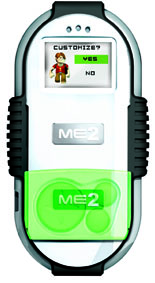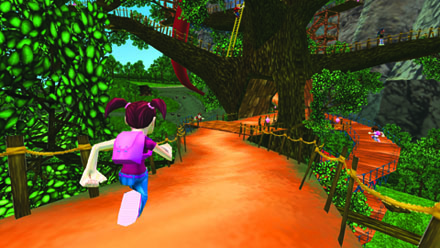Friday, August 15th, 2008
How is it that some members of online social networks have so many connections? Connections that number in the high hundreds, and sometimes even thousands? Do these users really know that many people?
A couple of years ago I was working on a presentation about inspiring technologies and their ability to influence future product development across a number of markets. One aspect of my presentation touched on social networks and their ability to bring people together that otherwise may not have the opportunity to interact with like minded people in the physical world. While preparing for this part of my presentation, I wondered “How is it that some people have so many social network connections?” While it’s not necessarily the norm, I noticed a small minority of users from services like LinkedIn and Facebook had hundreds, if not thousands, of connections. These people couldn’t be that gregarious, could they?
In my search for an answer, I stumbled upon a theory called Dunbar’s Number. Robin Dunbar, a British anthropologist, explored and published his thoughts on social groups, largely as a result of studying primate societies in the wild. Through his observations with primates, he developed a theory related to “social grooming”. Social grooming could be considered the meaningful, if not necessary, connections that exist between members of the chimpanzee tribes he was studying. Dunbar’s theory attempts to determine a primate’s maximum social size based on the dimensions of the animal’s neocortex (the size of its brain). Once he defined this theory, he applied it to a number of different animal species and other forms of evolved species, including people. The result? 148.
This number, 148 (or really 147.8) is the number Dunbar determined to be the maximum number of meaningful connections any person could have in their own personal social group. In social theory circles, this number is rounded up to be 150 meaningful connections.
(Before moving forward with my post, I’d like to point out that while Dunbar suggest that social group sizes of people could be correlated to a person’s brain size, many other researchers who study social group theories of humans do not. My article is simply an exploration of the concept, not an endorsement. Also, due to the logarithmic nature of this theory, coupled with a 95% accuracy calculation, this maximum number could be as low as 110 or as high as 210, depending on the fudge factor you’re willing to allow Dunbar’s formula.)
Can this number somehow help explain why some people have so many connections through social networking tools online? Well, not entirely, but I do see many individuals interested in online social networking who become familiar with this theory, reference it often.
Let me share with you my experience growing my own social network. My social networking product of choice for business is LinkedIn. I became a member over four years ago, not entirely understanding what social networking was all about or how it could possibly mean anything to me. Once I started dabbling with the service, reaching out to others and asking them to join my “network”, the number of users connected to me slowly started to grow. I distinctly remember how hard it was to grow a network in the early days of using the service. After a year of dabbling I reached about 50 connections. It was around that time that I slowly started to see things differently. I was just beginning to understand how to harness the power of social networks and its benefits, to understand the math involved in networked connections for finding other people who may have similar personal or business interests to my own. For each connection I added, I was able to reach exponentially more people beyond that single connection, all through the miracle of technology.
After some time and effort of regular use the big day came. I reached 150 connections. “Wow!” I said to myself, thinking I had finally reaching the upper number of my own personal village as defined by Dunbar. I sat back, and felt some kind of anthropological bliss having reached the outer limits of my social group size. But then, a strange thing started to happen. My network continued to grow, not entirely through own my efforts. I soon reached 160 connections, 170, 180, 190, 200. Fast forward many months and my network is just about to break 300 connections, twice the size of what Dunbar’s theory hypothesized. (Even with the math fluctuation, I still exceeded 210 connections.) What happened?? Was something wrong with the size of my neocortex? What would Dunbar say about the number of my connections?
I started to see social groups on a number of different levels. Could it be that Dunbar’s number is really a general formula to apply to a single social plane that, while developed based on one species, does not carry to another? Could it also be that Dunbar’s theory was all about self preservation, whereas the way most people engage in social circles is all about self selection? Anyone who has many different interests may very well engage in a variety of self-selected social planes.
While I don’t have a definitive answer to share here regarding multi-plane social spheres, this exploration started me on a path to question the strength of any connection between two individuals. When reviewing the strength of a connection between myself and any any other person in my network, I becomes clear immediately that the connection strength between myself and any other person I connect to varies greatly. I wondered if this connection strength could be charted out in some way, and if doing so would tell me something about Dunbar’s Number. I wondered if I could find an answer by crossing Dunbar’s theory with that of the Bell Curve. Having remembered that my grades in college were sometimes charted out on a Bell Curve, could the same be done with all of my self selected connections?
I began by looking up the definition of a Bell Curve, and among the answers I found one stated: “Many biological, psychological and social phenomena occur in the population in the distribution we call the bell curve.” Hmmm, those “social phenomena” words sure jumped out at me.
To get started with my experiment, I theorized and then defined different levels of “connected strength” any person could have with another. I defined these varying connections in the following way:
- Group I – Family members and/or very close friends
- Group II – Good friends
- Group III – People you knew or are acquainted with
- Group IV – People you knew but not that well
- Group V – People you did not know at all
- Group II – Good friends
If I applied this labeling to the fictitious virtual village I lived in within LinkedIn at Dunbar’s social group size of 150, the numbers for each category above would be 3, 21, 102, 21, 3 according to the Bell Curve spread. This village in the real world would loosely translate into the following:
- I had a mother, father and one very close friend or sibling in this village.
- I had 21 friends, possibly relatives, that I knew well.
- There were 102 additional people in my village, performing various necessary roles and services (teacher, baker, doctor, farmer, etc.)
- I knew 21 people that were part of my village but I didn’t really know them very well because I didn’t interact with them as often
- There were 3 complete strangers I didn’t recognize or know at all.
But in my LinkedIn world I didn’t have 150 connections; I have about 300. Would the connections in my own online network break out as nicely into these same mathematical groupings, at least in terms of a percentage? I downloaded a list of everyone I was connected with through LinkedIn. I then rated the strength of my connection based on the above categories, and lo and behold, the groupings and percentages were pretty close, not exact, but close!
I’m thinking that Dunbar’s upper limit of 150 meaningful connections does not hold true with how individuals engage online (or for that matter even offline) with self-selected social groups. But maybe there’s something here about the varying strength of connections within one’s own social community, at least in terms of these connective strength percentages.
I have many more thoughts on this and other related social group observations, including what it means if your percentages don’t nicely fit within the above described number. I’ve also been thinking about how this information could be used to explain children building their own social groups, but that will have to wait for another day. Thanks for reading.


 Every year when I attend the New York Toy Fair I may see a few thousand toys in the course of four days. I was recently speaking with another toy reviewer who said, “Did you ever notice that even though you see thousands of new toys, you will only remember maybe five of the best products?” This observation has served me well. What stands out in a Toy Fair attendee’s memory after seeing so many products will usually go on to be the breakthrough later in the year. I believe the ME2 by
Every year when I attend the New York Toy Fair I may see a few thousand toys in the course of four days. I was recently speaking with another toy reviewer who said, “Did you ever notice that even though you see thousands of new toys, you will only remember maybe five of the best products?” This observation has served me well. What stands out in a Toy Fair attendee’s memory after seeing so many products will usually go on to be the breakthrough later in the year. I believe the ME2 by 